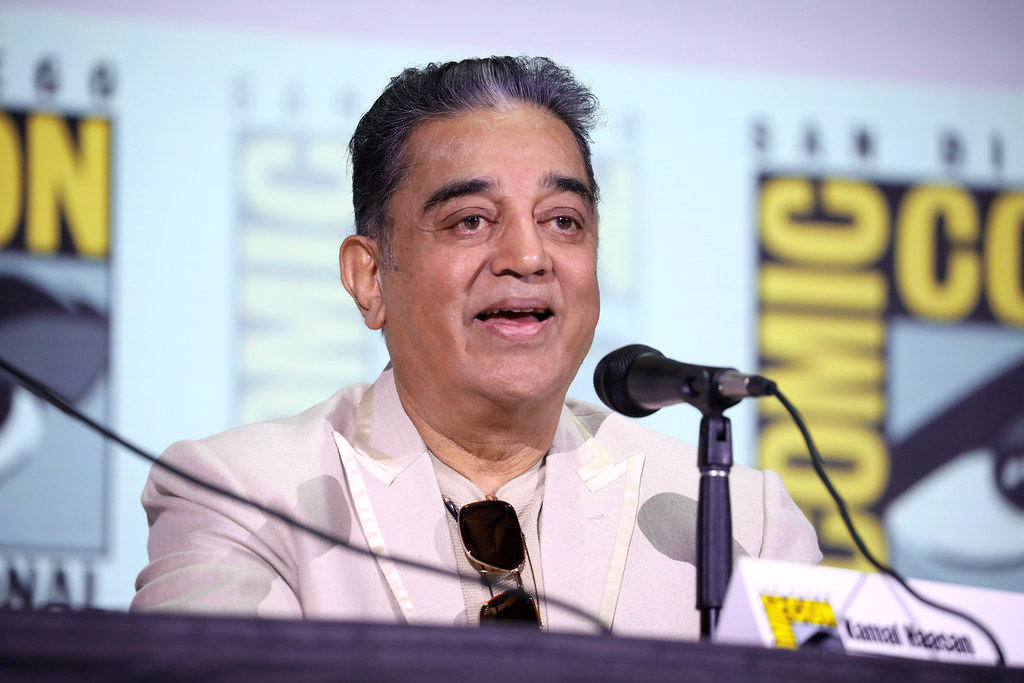
Kamal Haasan
Kamal Haasan’s Statement on Kannada Originating from Tamil is Historically Incorrect and Culturally Irresponsible
Recently, actor and political commentator Kamal Haasan made a controversial statement claiming that Kannada is “born out of Tamil.” While Haasan is undoubtedly a respected figure in Indian cinema and public life, such a remark is not only historically inaccurate but also deeply insensitive to the linguistic and cultural identity of Kannadigas. It is imperative to challenge such claims based on historical, linguistic, and literary evidence that points to Kannada’s independent and ancient origins within the Dravidian language family.
Linguistic independence and antiquity of Kannada
To begin with, Kannada is not a derivative of Tamil. Both Kannada and Tamil are members of the Dravidian language family, and they evolved from a common ancestor — Proto-Dravidian. According to leading linguists like Dr. Bhadriraju Krishnamurti and Robert Caldwell, Kannada and Tamil began diverging from Proto-Dravidian at least by 500 BCE, if not earlier. This means both languages developed independently for over two millennia.
The earliest written record of Kannada is the Halmidi inscription, dated to around 450 CE, and possibly earlier, depending on scholarly interpretation. This inscription, written in clear, structured Kannada, indicates a language with well-formed grammar, syntax, and vocabulary — not one in its infancy or recently born out of another language.
Furthermore, Purvada Halegannada (Old Kannada) literature predates many early Tamil works. The Kavirajamarga, a 9th-century text on poetics and rhetoric, refers to a well-established literary tradition in Kannada, going back centuries. It praises earlier poets and emphasizes the richness and distinctiveness of Kannada language and culture. Kannada’s grammar, as codified by Nagavarma I and II, was independently developed and is markedly different from Tamil’s grammatical structures.
Distinct literary traditions
It is a historical fact that both Kannada and Tamil have long, parallel literary traditions. Tamil’s Sangam literature, dating from around 300 BCE to 300 CE, is often cited as proof of Tamil’s seniority in literary output — and it certainly deserves respect. However, this does not imply Kannada is a derivative or subordinate language.
Kannada’s own early literature, especially during the Ganga and Rashtrakuta dynasties, shows clear evidence of an independent trajectory. The great Kannada poets like Pampa, Ranna, and Ponna, all of whom lived in the 10th century CE, are known as the “Three Gems of Kannada Literature” and laid the foundation for Kannada’s classical status.
Moreover, Kannada has a unique script that evolved from the Kadamba script, not the Tamil script. This evolution was regionally distinct and shows a separate identity both culturally and linguistically.
Cultural and political sensitivities
Statements like the one made by Kamal Haasan are not just academically incorrect — they are socially and politically tone-deaf. In a multilingual country like India, where linguistic pride is tied to identity, such assertions risk sowing unnecessary discord between communities.
Kannadigas have every reason to be proud of their language, which has producedJnanpith award winners like Kuvempu, U. R. Ananthamurthy and Girish Karnad, and continues to thrive in literature, cinema, and technology. To suggest that this language is a mere offshoot of Tamil is to ignore and insult the historical depth, richness, and dignity of Kannada.
